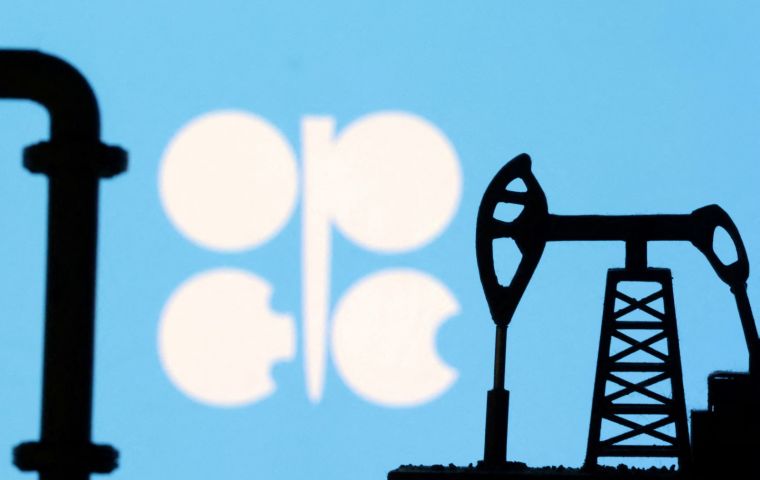MercoPress. South Atlantic News Agency
Lower oil prices ahead, as OPEC+ targets removing US shale oil from global markets
 OPEC’s share of global oil supply had fallen over the last couple of decades from over 50% before the shale revolution to 40% a decade ago and “just” 25% this year.
OPEC’s share of global oil supply had fallen over the last couple of decades from over 50% before the shale revolution to 40% a decade ago and “just” 25% this year. OPEC+ are expected to announce another bigger than initially planned production hike at its next meeting, 9/10 July, allegedly with the purpose of having Iraq and Kazakhstan comply with their quotas, but according to a Reuter’s report the target is to knock out the US shale production.
The OPEC+ group has been targeting US shale production for a long time given their higher production costs, which nevertheless with favorable prices had the US among world leading producers and a great influence in biting into shares in the international markets.
Thus the purpose of OPEC+ and OPEC to start a prices war, with a production increase in July in the region of some 440.000 bpd, according to the Reuter’s report, which should help recover market share.
“The idea is to put a lot of uncertainty into plans by others with prices at below US$ 60 per barrel,” said one of the Reuters sources. This means OPEC+ can wait while U.S. shale drillers reduce production in the face of higher costs. The latest Dallas Fed Energy sis US shale drillers need from US$26 to US$45 per barrel to cover their operating expenses at existing wells across the shale patch. But to drill new wells profitably, they need prices starting at US$61 per barrel of West Texas Intermediate and reaching US$70 for the Permian Basin, outside the Delaware Basin part of it.
The Reuters report suggesting OPEC+ wants to flood the market with cheap oil to hurt US shale notes that OPEC’s share of global oil supply had fallen over the last couple of decades from over 50% before the shale revolution to 40% a decade ago and “just” 25% this year. The US share, meanwhile, has risen from 14% to 20%.
This means that all those forecasts pointing to non-OPEC supply growth outpacing OPEC supply growth are no longer worth the devices they were written on. Even the International Energy Agency has changed its tune on non-OPEC supply growth, recognizing US shale’s challenges that have affected production plans. It still expects non-OPEC to add more supply than OPEC for some reason, but not all of it from the U.S.
But there is also a catch for OPEC+ since even when most Middle East producers have lower production costs, they also need high prices from oil revenue to help with national budget revenues.




Top Comments
Disclaimer & comment rulesCommenting for this story is now closed.
If you have a Facebook account, become a fan and comment on our Facebook Page!